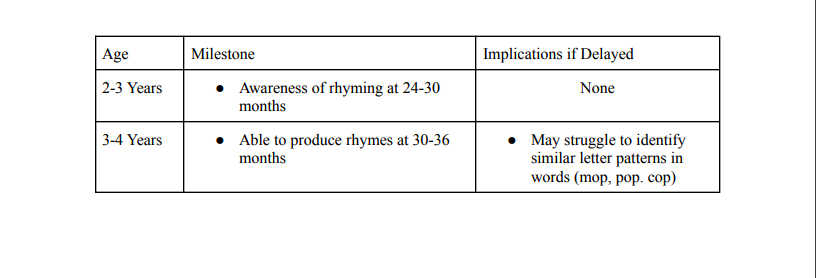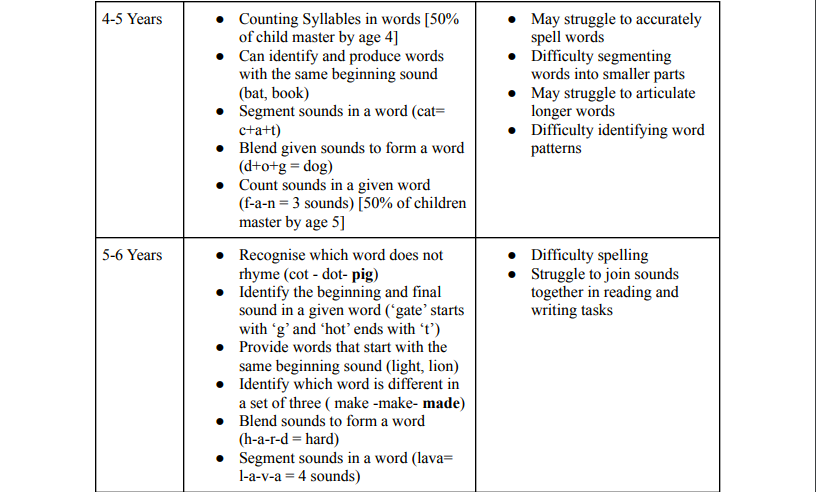Phonological Awareness, Phonemic Awareness, and Phonics
There tends to be confusion between the following terms: phonological awareness, phonemic awareness, and phonics. These skills are interrelated in reading and spelling, yet do not mean the same thing. It is important to know the difference between these skills to effectively help your child learn strategies to read and write. Each skill must be explicitly taught to the child, never assuming that they will suddenly grasp the concept.
Let’s explore the similarities and differences between these terms and how to implement them within the home.
Phonological Awareness
Phonological awareness measures the child’s recognition of large sounds (i.e., syllables and compound words). These skills help your child develop readiness for reading and writing tasks.
Activities to promote phonological awareness:
- Rhyming Words
○ Identify if a set of words rhyme.
○ Encourage your child to form their own set of rhyming words. - Compound Words: Combine words to make a larger word (ex: race + car)
- Syllables
○ Segment syllables and have your child combine them to form a word (ex: mac-a-ron-i)
○ Count syllables in a given word
○ Delete syllables to form different words (ex: butterfly without ‘fly’)
○ Add syllables to create new words (ex: add ‘boat’ after ‘sail’ to form ‘sailboat’) - Counting Words: Practice counting the number of words in a given sentence.
Phonemic Awareness
Phonemic awareness is a subcategory of phonological awareness. This skill addresses your child’s ability to notice individual sounds within a word.
Activities to promote phonemic awareness:
- Identify sounds in various places of a word
○ Example: What sound do you hear at the end of ‘bat’? /t/ - Counting Sounds: Prompt your child to identify individual sounds in a word
○ Example: How many sounds do you hear in the word ‘pot’? (3) - Listening
○ Find similar sounds
■ Example: Which words begin with the same sound sit, sat, chair? (sit and sat)
○ Determine where sounds occur in a word (beginning, middle, end). - Deleting Sounds
○ Example: What word do you hear when you remove the /b/ from bat (at)? - Replacing Sounds
○ Example: Change the /f/ in fun to a /b/ (bun). - Blending Sounds- provide individual sounds for your child to combine to form a word
○ Example: /c/-/o/-/t/ makes ‘cot’.
Phonics
Phonics is representing the letter rather than the sound produced by the letter.
Activities to promote phonics:
- Identify letter name
○ What is this letter? - Identify the sound of a given letter or blend (ex: ch, sh, bl)
○ What sound does k make? - Identify the letter of the given sound
○ What letter makes the /s/ sound? (s) - Blend sounds together to make real and silly sounds
○ Combining letters together to for pot (real) and fot (silly) - Spelling: use letter symbols and sound knowledge to correctly spell words (vet)
Phonological Awareness Development Chart



If your child demonstrates phonological delays, speech therapy may be recommended to address expressive and receptive language skills.

Blog by:
Jamie Bone- SLPA
Speech Language Pathologist Assistant
